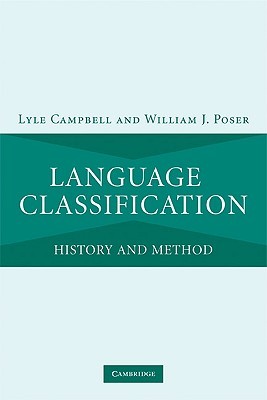
- We will send in 10–14 business days.
- Author: Lyle Campbell
- Publisher: Cambridge University Press
- ISBN-10: 052188005X
- ISBN-13: 9780521880053
- Format: 15.8 x 22.6 x 3.8 cm, hardcover
- Language: English
- SAVE -10% with code: EXTRA
Reviews
Description
How are relationships established between the world's languages? This is one of the most topical and most controversial questions in contemporary linguistics. The central aims of this book are to answer this question, to cut through the controversies, and to contribute to research in distant genetic relationships. In doing this the authors aim to: (1) show how the methods have been employed; (2) reveal which methods, techniques, and strategies have proven successful and which ones have proven ineffective; (3) determine how particular language families were established; (4) evaluate several of the most prominent and more controversial proposals of distant genetic relationship (such as Amerind, Nostratic, Eurasiatic, Proto-World, and others); and (5) make recommendations for practice in future research. This book will contribute significantly to understanding language classification in general.
EXTRA 10 % discount with code: EXTRA
The promotion ends in 18d.19:46:55
The discount code is valid when purchasing from 10 €. Discounts do not stack.
- Author: Lyle Campbell
- Publisher: Cambridge University Press
- ISBN-10: 052188005X
- ISBN-13: 9780521880053
- Format: 15.8 x 22.6 x 3.8 cm, hardcover
- Language: English English
How are relationships established between the world's languages? This is one of the most topical and most controversial questions in contemporary linguistics. The central aims of this book are to answer this question, to cut through the controversies, and to contribute to research in distant genetic relationships. In doing this the authors aim to: (1) show how the methods have been employed; (2) reveal which methods, techniques, and strategies have proven successful and which ones have proven ineffective; (3) determine how particular language families were established; (4) evaluate several of the most prominent and more controversial proposals of distant genetic relationship (such as Amerind, Nostratic, Eurasiatic, Proto-World, and others); and (5) make recommendations for practice in future research. This book will contribute significantly to understanding language classification in general.


Reviews